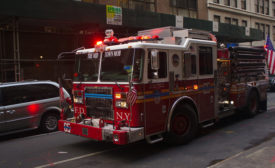News
Intellectually challenging jobs linked to better cognitive performance
It's the opposite for physically hazardous work
June 13, 2016
Smoking among U.S. high school students at an all-time low
But e-cigarette use a concern
June 13, 2016
Never miss the latest news and trends driving the safety industry
eNewsletter | Website | eMagazine
JOIN TODAYCopyright ©2024. All Rights Reserved BNP Media.
Design, CMS, Hosting & Web Development :: ePublishing








